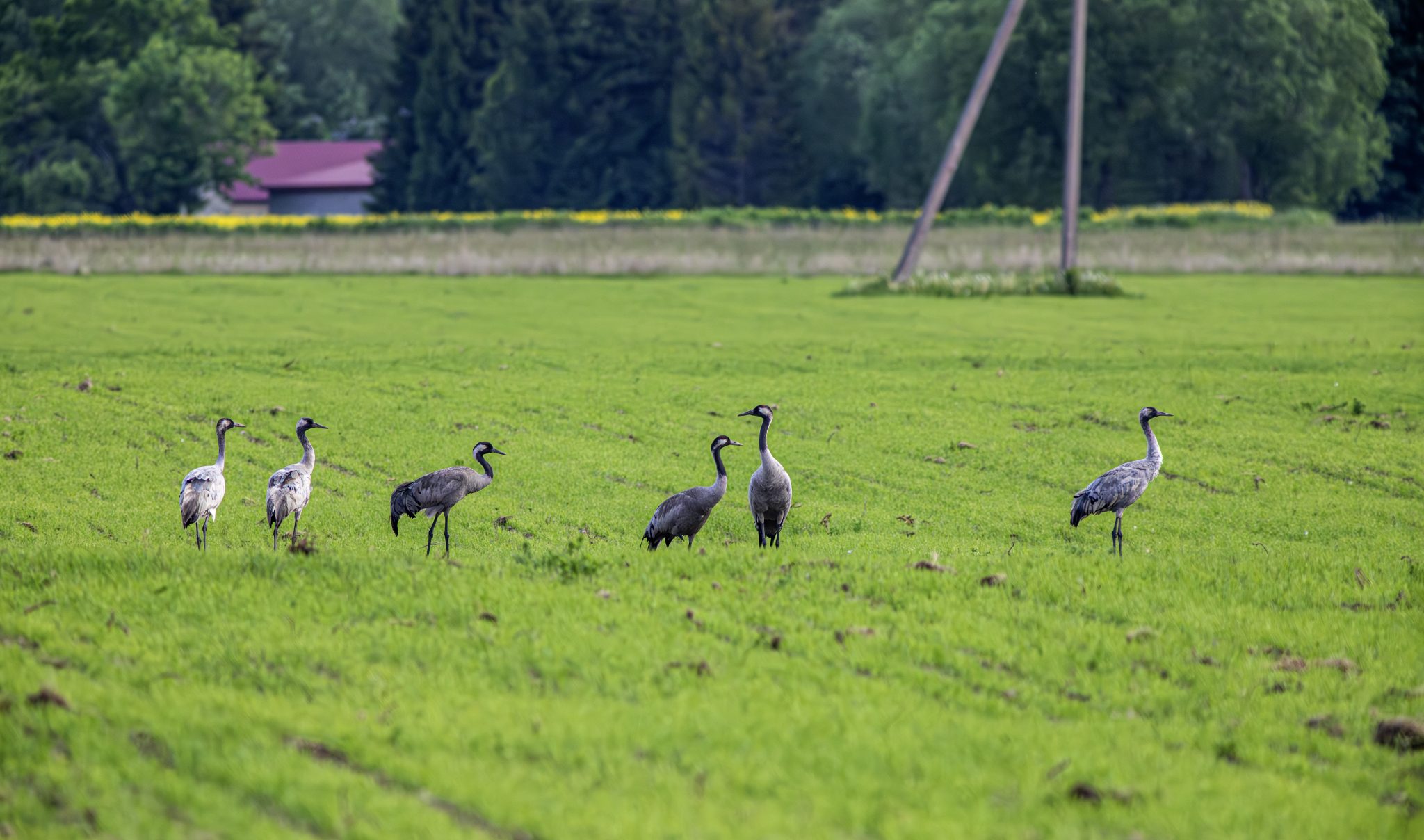Common Crane (Grus grus)
The Common Crane, also known as the Eurasian Crane, is a large, elegant, and graceful bird belonging to the family Gruidae. Recognized for its spectacular migratory displays and haunting trumpeting calls, it is a symbol of wilderness across Europe and Asia. These cranes are among the few crane species still breeding in parts of Europe.
🐦 Identification
- Length: 100–130 cm (3.3–4.3 ft)
- Wingspan: 180–240 cm (5.9–7.9 ft)
- Weight: 4.5–6.5 kg (9.9–14.3 lbs)
Appearance
- Plumage: Mostly slate-gray
- Head: Black and white with a distinctive red crown patch
- Neck: Long and slender, black in the front with white streaks extending from the eyes to the upper neck
- Wings: Broad with drooping black-tipped secondary feathers (“bustle” effect)
- Legs: Long and dark
🎶 Behavior & Calls
- Famous for their loud trumpeting calls, often heard during migration or display flights.
- Courtship dance includes elaborate jumping, bowing, and calling – a beautiful spectacle observed in breeding areas.
🌍 Habitat
- Breeding: Wetlands, bogs, and forested swamps in northern Europe and Asia
- Wintering: Southern Europe, North Africa, Middle East, and parts of India and East Asia
🔁 Migration
- A highly migratory species, the common crane travels thousands of kilometers between breeding and wintering grounds.
- Major migration stopovers include Germany (e.g., Rügen Island), France, and Spain.
- In autumn and spring, thousands can be seen in flocks soaring in thermals in V-shaped formations.
🪺 Breeding
- Season: April to June
- Nesting: Ground nest built in shallow water or marshland
- Clutch size: Usually 2 eggs
- Chicks: Precocial; they follow parents shortly after hatching and fledge after 9–10 weeks
🌱 Diet
- Omnivorous:
- Plant material: Roots, tubers, grains, berries
- Animal matter: Insects, worms, small vertebrates
🛡️ Conservation
- IUCN Status: Least Concern
- Population trend: Increasing, thanks to conservation efforts and wetland protection
- Threats:
- Wetland drainage
- Habitat fragmentation
- Disturbance from human activity
Several reintroduction and habitat restoration projects have helped reestablish breeding populations in western Europe, including the UK.
📌 Interesting Facts
- One of the most widespread crane species in the world
- Known in folklore and mythology as a symbol of vigilance and longevity
- Can fly over the Himalayas during migration (e.g., some Asian populations)
The Common Crane is a majestic and evocative species, blending strength with grace. Whether seen dancing in remote bogs or soaring across continents, it leaves a lasting impression on birdwatchers and conservationists alike.
Visited 34 times, 1 visit(s) today
Views: 728
Subscribe to the newsletter:
